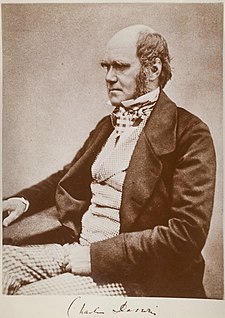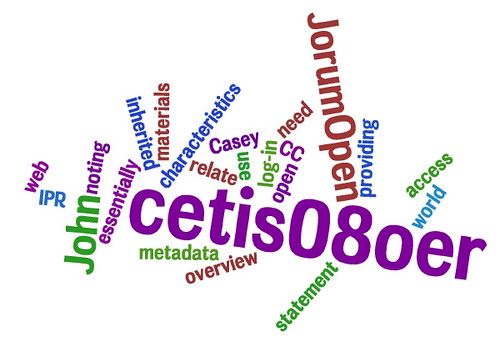This was one vision articulated by participants during an interesting and productive meeting earlier in July that aimed to review the JISC Repositories Roadmap produced by Rachel Heery and Andy Powell in 2006. Following an introduction by Rachel Bruce and a discussion of alternative definitions of “repository” led by Rachel Heery the meeting split into groups to discuss the forward looking vision and tactics for three key resource types: scholarly works, teaching and learning materials and research data.
Our brief was to:
- Note developments and achievements since the publication of the Roadmap
- Articulate a vision of what we want to achieve and tactics for how to realise this.
- Identify JISC interventions and priorities for activity.
The group discussing teaching and learning materials consisted of Amber Thomas, Jackie Carter, Andy Richardson, Andy Powell and myself and this post represents a summary of our discussion. I certainly cant claim the credit for all the comments and suggestions here!
Changes and Developments Since Roadmap Publication
- Shift in focus from learning objects to learning materials.
- Increased focus on media specific global repositories e.g. flickr, slideshare, etc.
- Invaluable lessons learned from Jorums experience of license implementation.
- Focus has shifted from system interaction to user / resource interaction.
- Mashups have created many new types of content.
- Mainstream understanding of œreuse relates to single media objects, e.g. jpeg rather than content package.
- Much less focus on interoperability standards.
- œContent packaging has become a bit of a dirty word.
- Continuing growth in the use of virtual learning environments.
- Open Educational Resources œmovement.
- Web 2.0.
Vision and Tactics
Vision: Better management and sharing of teaching and learning materials by individual teaching practitioners.
Boundaries are blurred in the teaching and learning space, more so than in the domain of scholarly communication. The language and terminology of the open access debate is not directly applicable to the teaching and learning domain. Do we really want to open access to all teaching and learning materials?
Why bother to manage teaching and learning materials in the first place? Institutions are not currently accountable for the management of their teaching materials. We need a much more developed concept of œuse, never mind œre-use. There are many different levels of use and re-use and subject contextualisation is crucial.
Learning objects are just one type of teaching and learning resource. There has been too great a focus on sharing and reusing learning objects and this has arguably served to mask the much greater issue of how to effectively manage all types of resources, both digital and non digital, used in, and generated by, the process of teaching and learning.
A landscape study of what kind of content is out there and where it is stored would be useful. We make far too many sweeping generalisations and unsubstantiated assertions. It would be useful to take a representative sample of institutions across the sector and study how they are, or are not, managing teaching and learning materials. We also need to know more about policy intentions at a senior management level and resource management strategies at a personal level.
The overall aim should be for institutions manage their materials more effectively to help improve the quality and experience of teaching and learning.
At the same time as considering the role of digital repositories, institutional policy and personal resource management strategies we need to share knowledge of effective teaching and resource management practice and promote opportunities for teachers to develop and engage with new technology.
Among other benefits, better management of teaching and learning content should help to facilitate the disclosure of resources to students. De-duplication of effort should also be beneficial to teaching practitioners and to the institution as a whole.
The JISC vision should be to help individual teaching practitioners to improve the management of their teaching and learning materials and consequently improve the process and practice of teaching and the quality of the learning experience.
This is not a œdigital repository vision, this is a teaching and learning vision but we need to identify how repositories can help to make this a reality.
How can we measure if we are making any progress towards achieving such a vision?
One potential driver for change could be for JISC to work with QAA to make some kind of statement on the management of teaching and learning materials.
Activities, Priorities and JISC Interventions
- Undertake baseline survey.
- Identify and embed good practice at different levels within institution.
- Work with QAA.
- Improve awareness and practice of IPR and licensing issues among teaching staff.
- Make better use of pilot license registry.
- Evaluate existence and value of subject specific services for teaching and learning.
- Open access to closed learning and teaching content collections (this could include content within vles).
- Understand benefits and costs of services to individuals.
- Understand and define range of relationships between repositories, vles, eportfolios and possibly also course catalogues.











